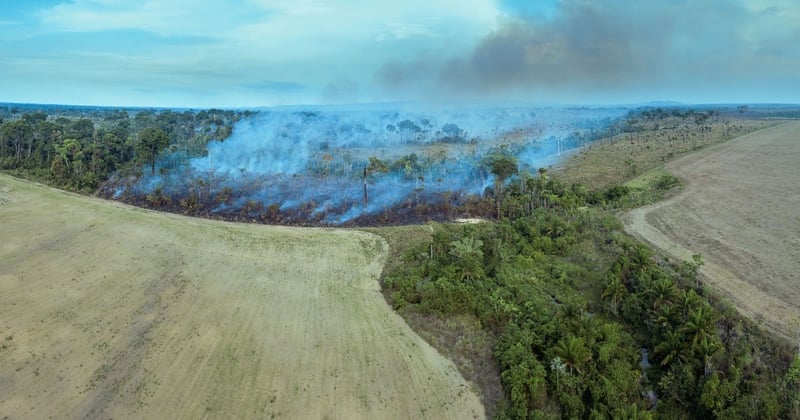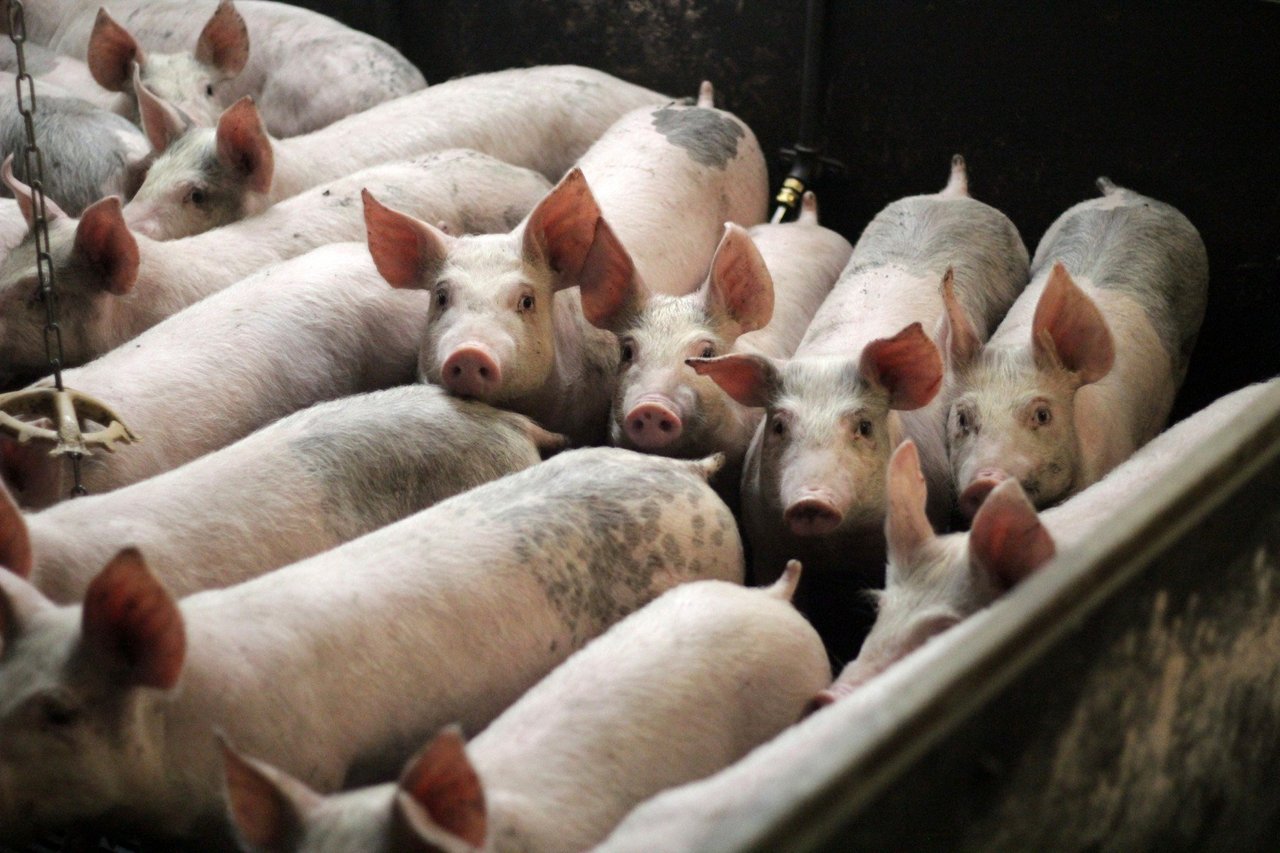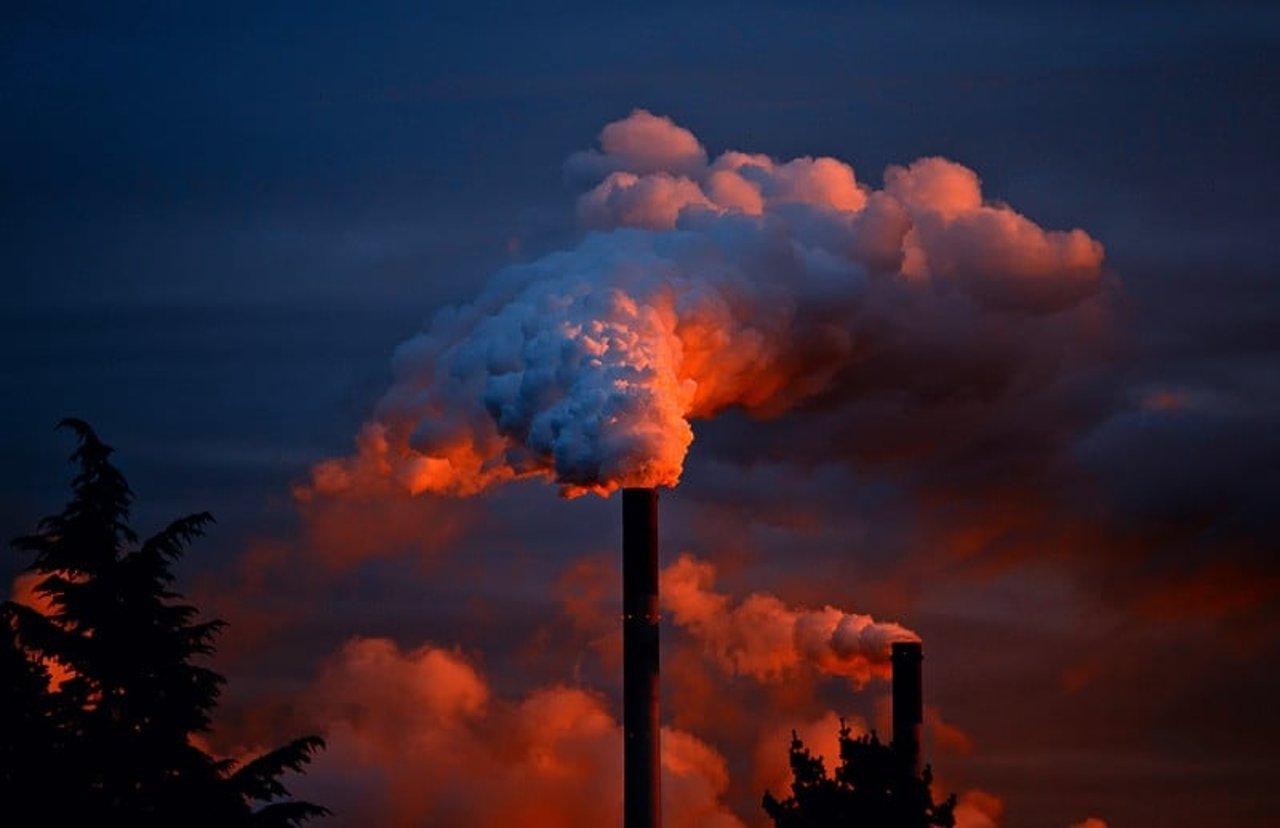
With COP26 underway, governments must act to end factory farming – protecting our climate and wildlife habitats and saving billions of farmed animals from a life of suffering.
With the biggest meat and dairy companies’ climate impact now outweighing that of several developed nations, there’s no bigger threat to the future of our planet than the expansion of factory farming.
Factory farming is almost always overlooked as the climate culprit within the agriculture sector. Yet it's factory farming that rips down forests to plant crops for animal feed, releasing carbon into the atmosphere. It also devastates wildlife habitats, displaces local communities, and profits from the cruel treatment of billions of farmed animals each year.
Rising demand
Fossil fuels are used to produce fertilizers for factory-farmed animal feed. And when applied to fields, these fertilizers release harmful nitrous oxide greenhouse gasses into the atmosphere. Overall, greenhouse gasses from factory farm animal feed production and processing represent 45% of total agricultural emissions.
And this footprint is set to grow. Demand for meat is rising fast, paving the way for the further expansion of factory farming. Back in 1970, global beef production was roughly the same as that of chicken and pork combined. With the growth in factory farming, the most intensively farmed species – chicken and pigs – are expected to be produced at levels triple that of beef cows by 2050.
Not only does this mean greater climate impact, it means billions more farmed animals are condemned to lives of suffering. On factory farms, animals are squashed together, often kept in cages and painfully mutilated. To cope with cruel conditions and prevent them getting sick, they are dosed daily with antibiotics in their feed or water. That’s a risky practice, creating the ideal environment for superbugs to emerge and transfer to humans via the food chain and our environment.
Animals squashed together on factory farms suffer lung problems from high ammonia levels, and manure spread on fields releases more nitrous oxide greenhouse gas into the atmosphere, as well as polluting waterways.
It’s time for action
If policymakers are to get real on climate at November’s Climate Change Conference (COP26), factory farming must be squarely in their sights.
The biggest factory farming companies continue their stranglehold on our food system off the back of misguided government policies that confuse factory farming with food security.
But the big volumes of meat, delivered at cheap prices by factory farming, rest on a paradox. Food security is undermined as land is diverted to grow crops to feed animals rather than humans. In 50 years, soy production has grown at double the rate of human population increase. More than three-quarters (77%) of global soy is now fed to farmed animals, not used for human food. Local farmers are caught up in a profit-driven global trade in commodity crops for factory farms, meaning local communities go hungry.
Factory farming worsens climate change, and climate impacts are felt disproportionately by small farmers. Adverse weather causes their crops to fail or their livestock to succumb to disease. Wild animals suffer agonizing deaths from droughts, floods, and fires at greater frequency and severity. Animals are less resilient to disease and habitat destruction from animal feed expansion, increasing the risk of disease spillover from animals to humans. There is a strong risk that intensive agriculture could trigger the next pandemic.
Big businesses are failing
Big factory farming businesses are doing their best to cover their tracks with a rapid increase in the number of ‘carbon neutral’ commitments. This includes promising to reduce emissions intensity of business-as-usual practices via technological breakthroughs, like changing feed formulations for animals. But minor tweaks to reduce emissions won’t be enough while overall meat production continues to grow sharply. There is no getting around the inherent carbon-intensive nature of factory farming, including its dependence on the global animal feed trade.
Businesses are also buying their way out of their obligations by calculating their climate impacts and paying to ‘offset’ the damage via schemes that remove carbon from the atmosphere, such as tree planting. This is nothing short of greenwashing, and the ultimate irony is that by locking land into crop production for feeding factory-farmed animals, there is little land left to reforest.
It’s clear that factory farming is winning while our climate and wildlife suffer. Farmed poultry now makes up 71% of all bird species by mass, whereas wild birds make up just 29% of total bird species by mass.
What can governments do?
A fundamental change is needed to our food system for the sake of our climate and our planet. Governments should not be sticking their heads in the sand prior to Glasgow; instead, they should:
- Commit to rejecting plans for further factory farms to limit their expansion
- Ensure government regulations make factory farming remedy its many harms – to climate, the environment, and our health
- Change subsidies and incentives so they support a predominantly plant-based food system and a diversified livestock farming sector with smaller numbers of animals produced overall
- Tackle big farming monopolies, with support given to ensure access to affordable and nutritious protein for all, including those in low-income countries
If we act to end factory farming now, we can make a positive change for our climate, protect precious habitats, support local communities, and release billions of animals from a life of cruelty and pain.
Voice your support for a ban on factory farming by supporting the Farm System Reform Act, a critical piece of legislation that would limit factory farming in the US and end one of the largest sources of cruelty to animals in the world.

